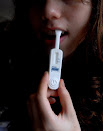This is part and parcel of this administration's on-going politicization of public-health processes designed to promote the greatest good for the greatest number while minimizing harms to others. Put otherwise, the FDA's mandate is to regulate medical devices, drugs, and biologics (including vaccines) to promote their safety and efficacy. It's a balancing act, to be sure, but it's one that needs to be guided by evidence, not electoral politics. Shouldn't that be clear? Why isn't that clear to the White House's "top officials"? And where's the outrage? Are we (and by "we," I mean not only our political class but the rest of us as well) so inured to the utter predictability of this sort of dangerousness that we simply accept it as par for the course?
If they are successful, these "top officials" are going to expose the nation to the unnecessary risk of a vaccine that is not ready for prime time. And, sadly, it also negates the efforts of the tens of thousands of volunteers who have voluntarily taken on the risks of participation in clinical trials.
POSTSCRIPT: 6:00PM CDT
FROM THE NEW YORK TIMES:
BREAKING NEWS
The F.D.A. released stricter coronavirus vaccine guidelines that the White House had blocked. They make a vaccine by Election Day highly unlikely.
The new guidelines recommend gathering extra data about the safety of vaccines in the final stage of clinical trials, a step that would take time and make it highly unlikely that a vaccine could be authorized before Election Day, Nov. 3.
Common sense and decency prevail!




















